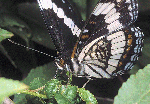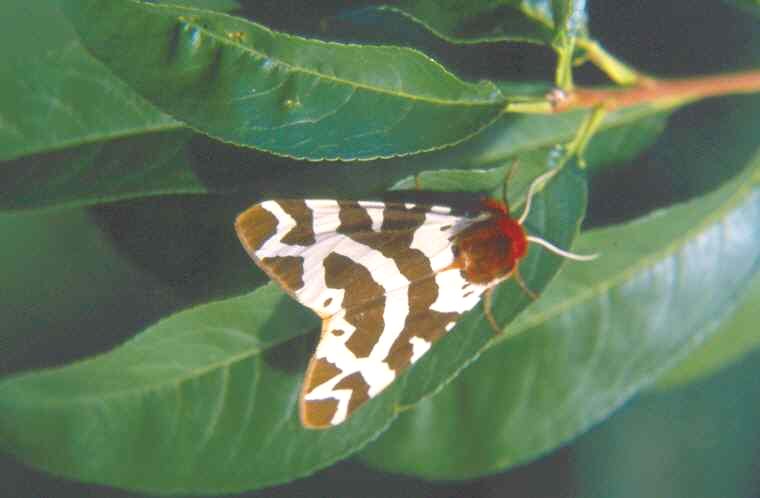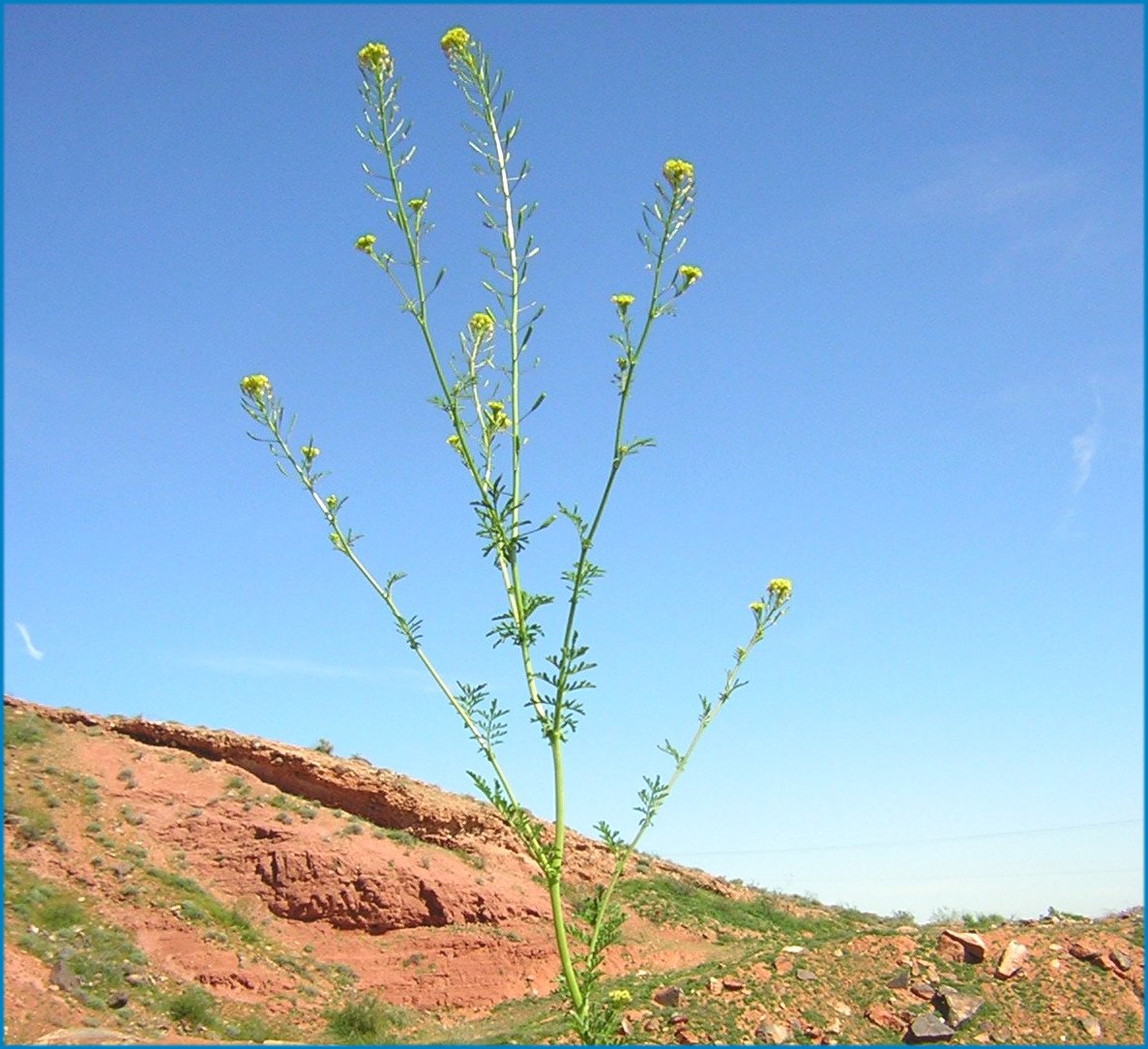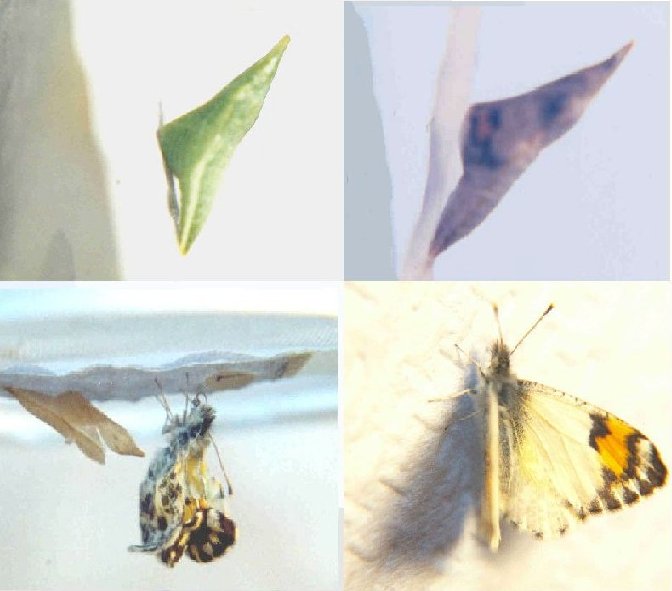
Utah Lepidopterists' Society
Founded 6 Nov 1976

|
|
Utah Lepidopterists' Society Founded 6 Nov 1976 |
|
| History | Mission | Meetings | Bulletin | Checklists | Links | Community | Field Trips | Habitat | Members | Kids | Contact Us |
Anthocharis thoosa thoosa
(Southwestern Orangetip)
 |
|
| Adults | Mature Larva |

|
|
| Example of habitat | Example of hostplant--Descurainia pinnata (Click on image for larger picture) |
General:
The Type Locality of A. thoosa thoosa is Mokiak Pass, Mojave County, Arizona; Scudder. The dark markings on this subspecies can be similar to the first brood of the nominate race = form "reikerti"; except the markings on the ventral hind wing are much more dark greenish gray. The amount of yellow coloration in the females seems to be greater with southern Utah populations as compared to northern ones; although there are examples of all yellow female from Cedar Fort, Utah County, Utah. In Northern Utah populations, males patrol up and down riparian habitats and dry washes seeking females. Females, on the other hand, can be found away from the gullies flying adjacently to Juniper trees in close association with its larval hostplants.
Utah Distribution and Habitat:
Anthocharis thoosa thoosa flies in the Basin and Range Province from Northern Utah south to Washington County where it flies in the Beaver Dam Mountains as well as in the Pine Valley Mountains. Colonies of thoosa also appear in central and eastern Southern Utah approaching the Colorado border. In northern and central Utah, this butterfly is replaced in the Wasatch Range by Anthocharis julia browningi. However, recently, small colonies of thoosa have been found flying sympatrically and synchronically with browningi at Willow Creek (Juab County), Deep Creek Canyon (Juab County), Little Birch Creek (Juab County) as well as Rock Canyon (Utah County). Based upon a recent study in Juab County, there appears to be some gene exchange between A. thoosa thoosa and A. julia browningi in the narrow range where they meet.
Bionomics:
Hostplants for Anthocharis thoosa thoosa include Descurainia pinnata, Arabis perennans, and Arabis holboelli. (Most of these plants can be found seeking refuge between rocks or under juniper trees. Note: For tips on how to raise A. thoosa thoosa in the lab, please click here.)
The ova are white turning orange after 24 hours; hatching in about 4-5 days. First instar larvae are cannibalistic and will consume other thoosa ova if it finds them. The young first instar larva is light colored with a dark head. Second and third instar larvae of A. sara are greenish. The fifth instar larva is pictured above.
Hibernation is as pupa. For those rearing A. t. thoosa in the lab, most pupae will bypass emergence after 1 year and will emerge during the second, third, or fourth year of diapause.

Pupa and recently emerged female from the Oquirrh Mountains; vicinity of Cedar Fort, Utah County, Utah. The time frame between find the ovum and emergence of this adult was nearly three years. For better photos of a developing thoosa pupa and freshly emerged female, please click here.
For more images of this butterfly, please see Nicky Davis' Wild Utah website!
All images of Limenitis weidemeyeri on the ULS Info Bar courtesy Jay Cossey